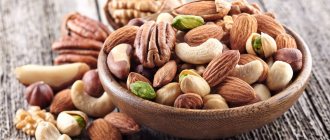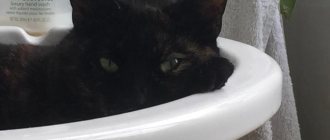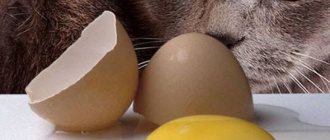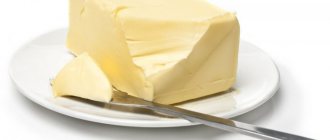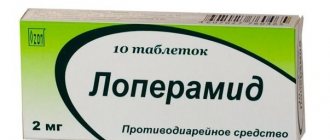What vegetables can you give your cat?
In plant foods, fiber is the main value for cats. It is not digested and does not contain nutrients, but it helps remove swallowed fur from the stomach, improves intestinal motility, and stabilizes stool. Vegetables bring moisture into the body; cats are reluctant to drink pure water and prefer to receive it with food. Cats absorb micronutrients of plant origin.
In healthy animals, vegetables make up 5–10% of the diet. For overweight cats, the amount is increased to 20%. Plant fiber gives you a feeling of fullness, but does not increase calorie content. For cats, choose only fresh food without rot, damage, or stains. Frozen ones are also good; they retain the beneficial ingredients.
Vegetables are properly processed:
- First, wash under cold water, peel, and remove the seeds.
- When cooking, do not add salt, spices or seasonings. They disrupt water balance and metabolism. It’s healthier to cook fresh ones in meat broth instead of water, while frozen ones are steamed.
- Vegetables are chopped: raw ones are grated, greens are chopped with a knife, boiled ones are finely chopped or passed through a strainer or blender.
- Cooked vegetables are given as an independent “dish”, diluted with broth or mixed with meat, the proportions are adhered to: 3/4 protein food, 1/4 vegetable food.
- Add 3-5 drops of olive or sunflower oil to the prepared food; without it, fat-soluble vitamins will not be absorbed.
It is difficult to imagine a cat who eats only vegetables, but if this happens, he gets sick and dies. Plants do not contain animal proteins, amino acids, or fatty acids that cats need. Cats do not like vegetables with a strong, bitter taste. It is better to choose neutral types that absorb and do not clog the smell of meat.
The table indicates the crops that can be added to the diet:
| Kinds | Benefits for the cat |
| Carrot | Includes beta-carotene, it synthesizes vitamin A and is not destroyed by heat treatment |
| Zucchini | Contains antioxidants, iron. Soft fiber does not irritate the intestines |
| Pumpkin | Includes the rare component carnitine, it accelerates fat burning, helps build muscle mass, and renews the gastrointestinal mucosa |
| Beet | Dietary fiber supports the excretory functions of the intestines. The vitamin and mineral composition does not change after cooking |
| Broccoli | Increased amount of vitamins B, C, K, carotene |
| Cucumber | Improves the absorption of meat proteins |
| Green bean | It has a rich composition of minerals, 100 g contains only 30 kcal |
| Cauliflower | Includes few hard fibers, so it is easily digested and does not irritate the stomach. |
| Leaf salad | The amount of calcium is not inferior to dairy products, has a beneficial effect on the liver |
| Parsley, celery, dill | Enrich food with microelements, accelerate urine excretion, warns the ICD |
| Spinach | Useful composition of vitamins and minerals, preserved after heat treatment |
If the animal refuses vegetables, you will have to add bran to the “dishes” or grow grass from sprouted grains of barley, oats, and wheat.
Cat food in nature
The statement that a cat is a predator cannot be questioned. The entire cat family in the wild hunts and eats mainly raw meat . And that is why the digestive system of these animals is suitable for digesting and obtaining nutrients from raw meat or other animal protein. It is also important that the main prey of cats in the wild are herbivores. Their stomachs almost always contain remnants of vegetation they consumed before death. And predators happily eat these leftovers, thereby replenishing the body’s lack of those substances that they do not receive from raw meat.
But it is worth remembering that the main component of cat nutrition is meat. In this regard, the length and structure of the digestive tract of predators differ significantly from herbivorous representatives of wildlife. Accordingly, the digestibility of a particular food varies greatly depending on which class the animal belongs to. After all, no one will feed a cow meat or a wolf hay.
What vegetables should you not feed your cat?
When feeding, the following restrictions are observed:
- Plant products are not mixed with fermented milk; beneficial substances are less easily absorbed.
- Do not give large pieces: the animal risks choking.
- It is not added to industrial feed; it already contains fiber.
- Early vegetables do not have time to accumulate vitamins; they contain more nitrates.
- Pickled foods include salt, spices, and vinegar, which lead to metabolic failure.
- Fried ones contain excess fat and harm the liver and pancreas.
- Add a significant amount of salt to the salted ones. It is deposited in the bladder and kidneys, leading to the development of urolithiasis.
- Harmful ingredients are added to canned vegetable salads: pepper, garlic, vinegar, salt.
- When purchasing frozen mixtures, carefully study the ingredients so that they do not contain crops that are toxic to pets.
The following vegetables are prohibited for cats:
| Kinds | Harm to the cat |
| White cabbage | Causes fermentation in the gastrointestinal tract, bloating, increased gas formation |
| Onion | Contains disulfides, they destroy red blood cells, which causes anemia. The lethal proportion is 0.5% of body weight |
| Garlic | Also includes disulfides, but in smaller quantities |
| Avocado | The skin and pit contain the toxic element persin, which causes poisoning with vomiting and diarrhea. |
| Raw potatoes | Includes the toxic component solanine, it changes the composition of the blood, depresses the nervous system, and impairs kidney function. Its concentration increases in green, sprouted tubers |
| Boiled potatoes | After heat treatment, solanine levels decrease, but excess starch disrupts metabolism |
| Raw tomatoes, eggplants | Also includes solanine, its amount is higher in unripe tomatoes |
| Rhubarb, sorrel | Salts of oxalic acid provoke urolithiasis |
| Legumes: peas, beans, soybeans | They are not digestible and cause gas formation, because their main components are plant proteins and carbohydrates |
Can cats be given dog food?
Is it possible to give a cat cheese?
Is it possible to give cats canned fish?
When fed these vegetables, cats begin to develop health problems: from indigestion to severe poisoning.
The dangers of low-quality dry food
Industrially prepared dry and wet cat foods are the simplest nutritional option. But for them to be useful, their composition must be balanced. Proteins, fats, carbohydrates, vitamins, micro- and macro-additives must be contained in the required proportions. Read about the composition of industrial feeds.
Not all industrial mixtures meet such strict requirements. Compositions with a meat content of 50 percent or more deserve a satisfactory rating. Such foods belong to the super premium and holistic classes (Acana, Orijen, GO!). Read our review of the best foods for cats and kittens.
Cheap mixtures, such as Whiskas or Kiteket, contain a lot of vegetable grains and fats; they are not recommended for complete nutrition of pets.
Manufacturers achieve the attractiveness of such cat food through flavoring additives and aromas, which also cause harm to animals.
Why vegetables can be dangerous
In addition to toxins, vegetables contain traces of chemicals used in agriculture:
- Pesticides are used to protect crops from diseases, insects, and kill weeds. They cover the skin and penetrate plant tissue. When accumulated in the body, they provoke skin rashes, nausea, diarrhea, and stomach pain.
- Nitrates are formed in vegetables naturally during the breakdown of organic matter with nitrogen and come from the soil along with fertilizers. They do not cause harm, but in the body they are converted into toxic nitrites, which cause spasms and slow down blood flow. In case of severe poisoning, the structure of hemoglobin changes and it stops carrying oxygen to the tissues. In severe cases, the animal develops hypoxia, the mucous membranes of the intestines and stomach become inflamed, and protein and carbohydrate metabolism are disrupted.
An allergy to plant components cannot be ruled out. An unfamiliar vegetable species is first given only to try and the pet’s reaction is observed.
Chicken bones, fish heads
Often pets are thrown from the table something that is “not a pity”, for example, bones. The cat will probably eat such a treat, at his own peril and risk.
The bone can get stuck in the esophagus (and then the pet cannot be saved without surgery), injuring any part of the digestive tract with sharp edges. When eaten in large quantities, bones cause painful constipation.
Don't give your cat bones, and make sure she doesn't steal them from the trash. The same can be said about bony fish, fish heads and tails.
How to keep vegetables safe
The concentration of harmful substances is reduced in the following ways:
- The animal is fed seasonal vegetables : less fertilizer is used during cultivation. In winter it is better to use frozen ones.
- Food is kept in the refrigerator : in a warm environment, nitrates quickly turn into nitrites.
- Fruits and greens are thoroughly rinsed : water washes away dirt, harmful microorganisms, and chemicals from the surface.
- The peel, stalks, and tails are cut off , the top leaves are removed from the salad, the stems are removed from parsley and dill: in these parts the level of nitrates is higher. In carrots they are concentrated in the core.
- Greens and peeled fruits are kept in water for half an hour , toxic substances pass into the liquid.
- When cooking, the amount of nitrates is reduced by 50–80% , the poisonous solanine in potatoes, tomatoes, and eggplants is destroyed.
- Heat treatment will not help neutralize the toxic effects of disulfides in onions, garlic, and persin in avocado peels. These vegetables are excluded from the diet.
Various types of peas
The three different types of peas are green (or garden) peas, snow peas and snow peas. Luckily, if prepared properly and given in moderation, all three types of peas are safe for cats. Cats can eat fresh, frozen or cooked peas. Just make sure that if the peas are frozen, they are still soft enough for your cat to chew to avoid choking. Your best bet would be fresh, soft, unsalted peas. The clearer the pea, the less likely it is to upset your kitty's tummy.
Always make sure the peas are unseasoned! Seasonings such as onion and garlic are toxic to cats and should always be avoided.
Raw or cooked
The opinions of felinologists and veterinarians differ, but there are no strict prohibitions regarding either fresh or boiled vegetables. Cats are reluctant to eat them, so owners often follow the pet’s taste and give them in the form that he likes. Be sure to cook food for animals with diseases of the gastrointestinal tract.
The need for treatment for healthy cats depends on the stiffness of the fibers:
- beets , cabbage , pumpkin are boiled to soften coarse fiber and reduce the concentration of nitrates;
- tomatoes , potatoes , eggplants are processed to remove solanine;
- greens and cucumbers are given raw;
- zucchini , green beans , and carrots are fed fresh and boiled.
Plant food is a secondary but necessary component of a cat’s diet. They are taught to eat them from childhood, they are given vegetables that the pet eats, except toxic ones, and they are prepared correctly.
Soy in cat food
Of course, many may read the composition of dry cat food and object. After all, soy and its components are very often found in such feeds. But soybeans also belong to the legume family, like beans. So what? Do food companies specifically add things that are harmful? Of course not! The fact is that soybean that ends up in dry food is processed in a special way many times.
During this operation, all its properties that could cause any inconvenience to the cat are neutralized. And even vice versa, after such processing, soybeans gain the ability to be absorbed by the digestive system of a pet. That is, there is nothing wrong with the fact that some amount of legumes ends up in your pet’s diet. Only benefit.


